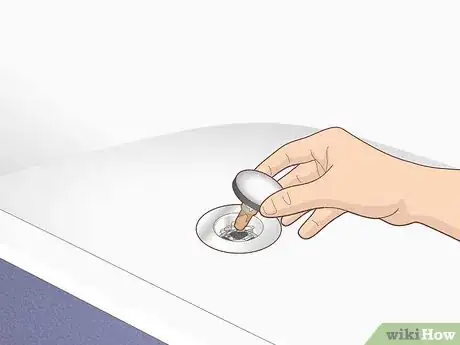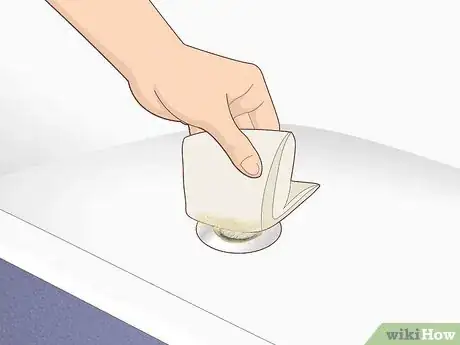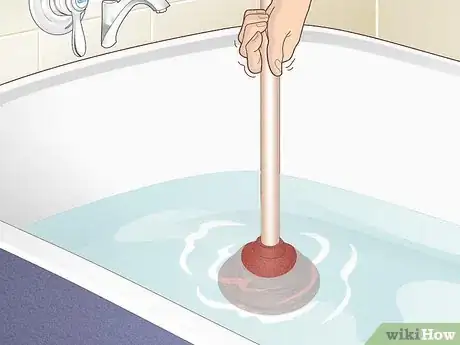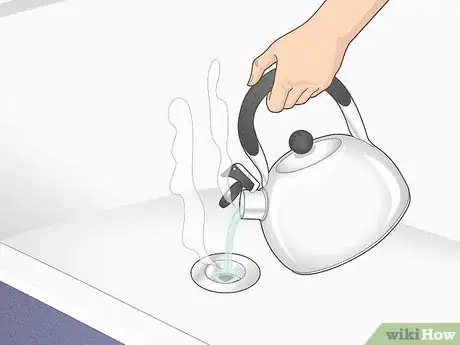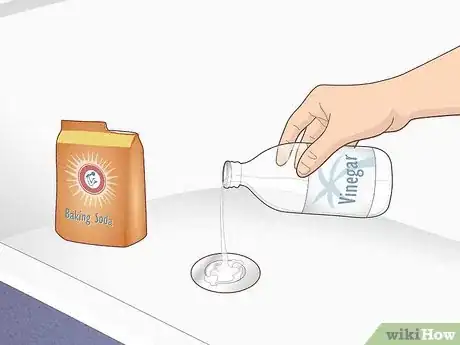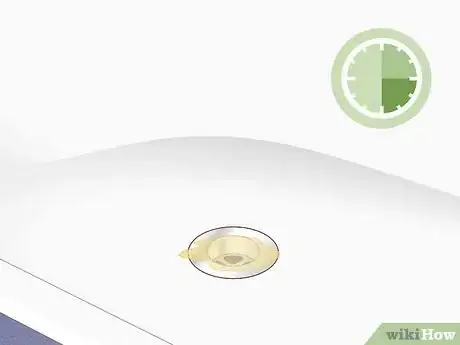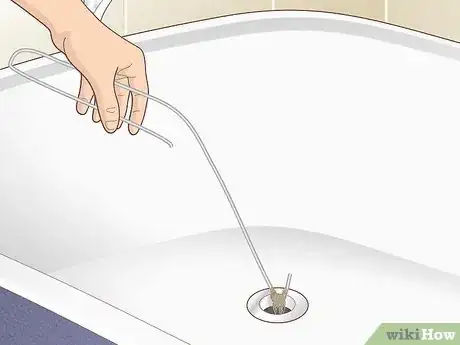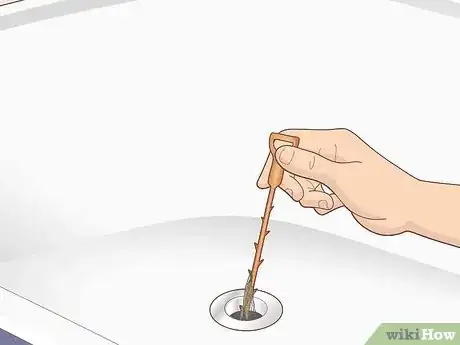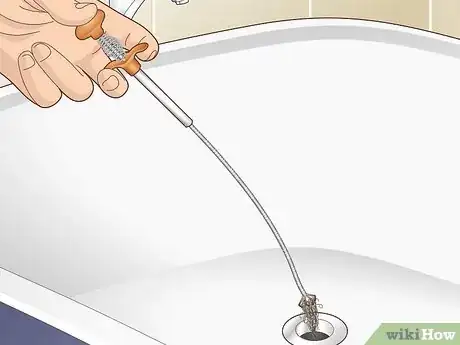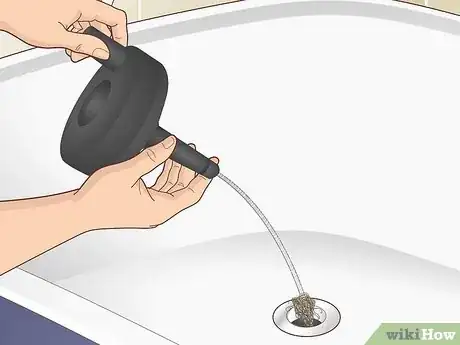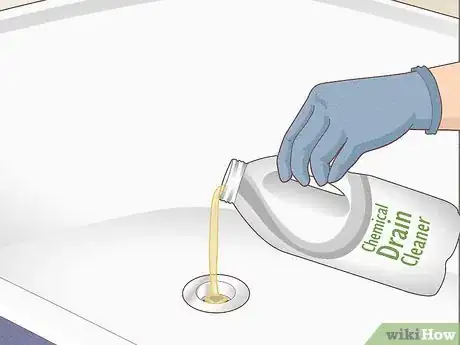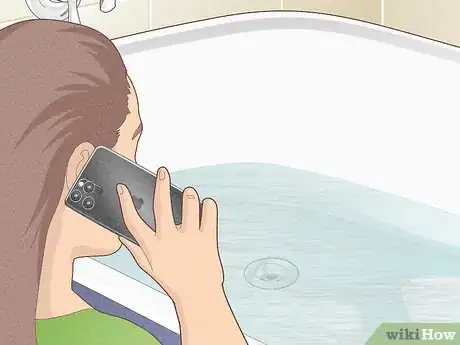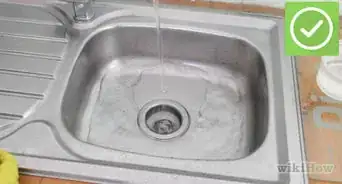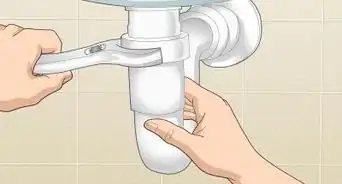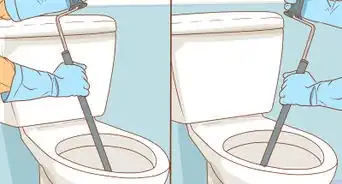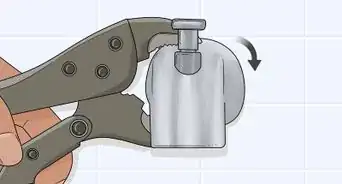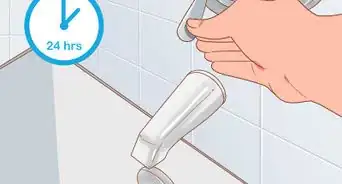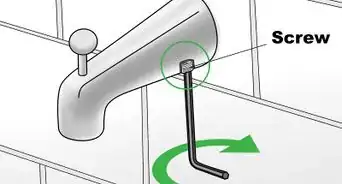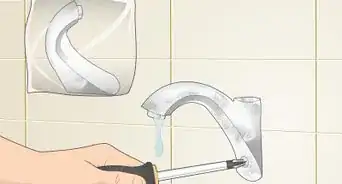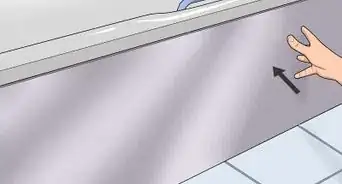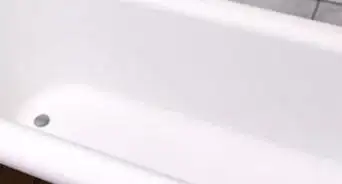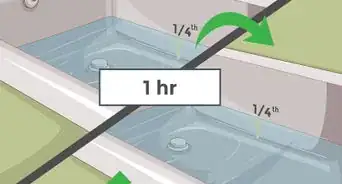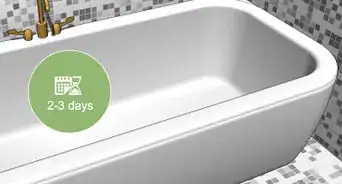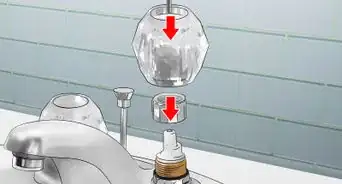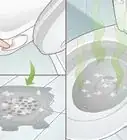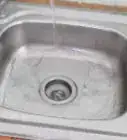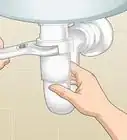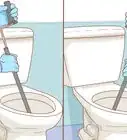This article was co-authored by Kadi Dulude and by wikiHow staff writer, Christopher M. Osborne, PhD. Kadi Dulude is a House Cleaning Professional and the Owner of Wizard of Homes, a New York City-based cleaning company. Kadi has over 10 years of experience and manages a team of over 90 registered cleaning professionals. Her cleaning advice has been featured in Architectural Digest and New York Magazine.
There are 7 references cited in this article, which can be found at the bottom of the page.
This article has been viewed 4,551,573 times.
It’s really frustrating when your tub takes 20 minutes to drain after a bath, or when water creeps up over your ankles during a shower. But you probably don’t need to call a plumber to fix the problem. We’ve listed a bunch of great DIY options here—start with the first two items on the list (cleaning the strainer/stopper and drain mouth), then try the others until you find one that does the job. Now it’s time to bust that clog without busting your budget!
Things You Should Know
- Remove the stopper and/or strainer and clean hair and gunk from it as well as the mouth of the drain. Always start with these steps.
- Use a plunger on the drain if there’s standing water; otherwise, pour in a clog-buster like boiling water or vinegar and baking soda.
- Manually remove deeper clogs by reaching a tool like a wire hanger or drain stick into the drain and pulling out the gunk.
Steps
Expert Q&A
Did you know you can get expert answers for this article?
Unlock expert answers by supporting wikiHow
-
QuestionWhat if I don't have a drain claw to pull hair out?
 Kadi DuludeKadi Dulude is a House Cleaning Professional and the Owner of Wizard of Homes, a New York City-based cleaning company. Kadi has over 10 years of experience and manages a team of over 90 registered cleaning professionals. Her cleaning advice has been featured in Architectural Digest and New York Magazine.
Kadi DuludeKadi Dulude is a House Cleaning Professional and the Owner of Wizard of Homes, a New York City-based cleaning company. Kadi has over 10 years of experience and manages a team of over 90 registered cleaning professionals. Her cleaning advice has been featured in Architectural Digest and New York Magazine.
House Cleaning Professional
-
QuestionWhat will dissolve hair in a drain?
 Kadi DuludeKadi Dulude is a House Cleaning Professional and the Owner of Wizard of Homes, a New York City-based cleaning company. Kadi has over 10 years of experience and manages a team of over 90 registered cleaning professionals. Her cleaning advice has been featured in Architectural Digest and New York Magazine.
Kadi DuludeKadi Dulude is a House Cleaning Professional and the Owner of Wizard of Homes, a New York City-based cleaning company. Kadi has over 10 years of experience and manages a team of over 90 registered cleaning professionals. Her cleaning advice has been featured in Architectural Digest and New York Magazine.
House Cleaning Professional
-
QuestionWhat will clog tough bathtub drains?
 Mark SpelmanMark Spelman is a General Contractor based in Austin, Texas. With over 30 years of construction experience, Mark specializes in constructing interiors, project management, and project estimation. He has been a construction professional since 1987.
Mark SpelmanMark Spelman is a General Contractor based in Austin, Texas. With over 30 years of construction experience, Mark specializes in constructing interiors, project management, and project estimation. He has been a construction professional since 1987.
Construction Professional
References
- ↑ https://www.bobvila.com/articles/how-to-unclog-a-shower-drain/
- ↑ https://youtu.be/JWZklniOo_4?t=2
- ↑ https://www.bobvila.com/articles/how-to-unclog-a-shower-drain/
- ↑ https://simplyhometips.com/unclog-bathtub-drain/
- ↑ https://www.bobvila.com/articles/how-to-unclog-a-shower-drain/
- ↑ Kadi Dulude. House Cleaning Professional. Expert Interview. 22 September 2019.
- ↑ https://www.h2ouse.org/how-to-unclog-a-bathtub-drain-with-bleach/
- ↑ https://www.today.com/series/one-small-thing/how-often-should-you-clean-drains-right-way-do-it-t114416
- ↑ https://www.today.com/series/one-small-thing/how-often-should-you-clean-drains-right-way-do-it-t114416
- ↑ https://www.bobvila.com/articles/how-to-unclog-a-shower-drain/
- ↑ https://www.bobvila.com/articles/how-to-unclog-a-shower-drain/
- ↑ https://simplyhometips.com/unclog-bathtub-drain/
- ↑ https://www.bobvila.com/articles/how-to-unclog-a-shower-drain/
- ↑ https://www.goodhousekeeping.com/home-products/a27275116/tubshroom-drain-protector-review/
About This Article
If your bathtub drain is clogged, it’s usually an easy fix. Most of the time, bathtub clogs are caused by a build up of hair and other debris in the drain. To remove the clog, start by unscrewing the tub drain stopper. Depending on the type of stopper you have, you can do this by twisting it off by hand or using a screwdriver. Once that’s off, use needle-nose pliers to pull all of the junk out of the drain. You can also use the end of a bent metal coat hanger. If you don’t find a clog underneath the stopper, it may be deeper in the drain. To access it, unscrew the overflow plate in your tub, and pull it out along with the linkage and stopper that are attached. Clean off any gunk in the stopper and linkage, then run water down the drain to flush out anything that’s left. If your bathtub is still clogged, you can try plunging the drain. Remove the overflow plate if you haven’t already, and stuff a rag into the opening to prevent air from escaping as you plunge the drain. Then, place the head of a plunger over the drain, and start plunging until the water starts to drain. Another option you can try is using baking soda and vinegar. Just pour ½ cup (90 g) of baking soda down the drain followed by 1 cup (240 mL) of vinegar. Cover the drain and let it sit for 30 minutes. Then, pour hot water down the drain to flush out the clog. If this method doesn't work, keep reading to learn how to use a toilet plunger or a chemical drain cleaner to solve your problem!
